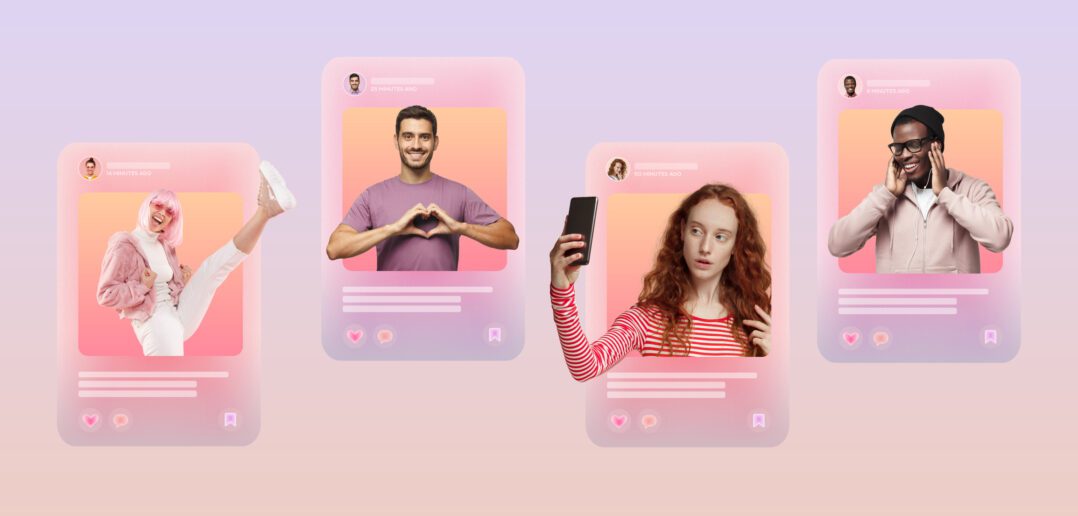The digital age and its impact on media content habits
Just like for any other type of product or service, viewers have consumption habits when it comes to media content as well. In the industry, these are referred to as media consumption habits, in other words the patterns and preferences that individuals express when accessing and engaging with different types of media, whether traditional or digital. These can be shaped by cultural and social shifts or influences, alongside demographic factors such as age, gender or location; but the #1 driver for changes in media content habits is undoubtedly technological advancements. Just think how the advent of digital tools has deeply influenced how we consume pretty much any type of media content, whether audio, video, news or entertainment, over the past decade alone.
A simple illustration of this pertaining to television: there are currently over 500 streaming services available in the Asia Pacific and nearly 600 in North America*. This comes on top of traditional broadcasters who still have strong audiences just about everywhere, and they are all in constant competition for our attention with social media, video games, messaging apps and all the other entertainment and information tools that are available in our digital world that shape our media content habits.
The new reality for media companies
All that is to say it’s quite clear that viewers today are flooded with content. And this plethora of programmes and shows has created different media content habits that have in turn brought about changes in the industry when it comes to how content is produced and distributed. These are the questions that were addressed during at panel talk at MIPCOM, the International Co-Production and Entertainment Content Market, in Cannes in October 2023. Entitled « Hear from Streamers », this talk invited two global streaming industry executives, Natasha Matos-Hemingway, Chief Commercial and Marketing Officer at Shahed, and Cristian Liarte, VP of Original Content Europe at Rakuten TV, to discuss how their respective companies navigate this new landscape of television consumption.
In the introductory presentation for this session, Jack Davison, the EVP of England-based media consultancy 3Vision, set the stage, painting a picture of the current global context for the sector. « Over the past couple of years alone, geopolitical issues, marcoeconomic conditions and the rise of the cost of living have caused a lot of strife and challenge for the streaming industry, » he said. « On top of that, the time when investors were quite happy to throw cash at big media and tech companies is over. Now the way investors are looking at these companies is very different, which creates a very different atmosphere in which everybody works. »
As mentioned, that has not stopped streamers of all kinds from proliferating. Davison presented the following figure: the number of streamers premiering English-language series and/or movies rose from 27 in 2017 to 166 in 2023. In fact, he went on to explain that it’s hard to find a show today that isn’t on a streaming service of some sort. In 2022-2023, 87% of new seasons of US programmes shown across the six major European markets were premiered by streamers, not broadcasters. The proportion was only 46% in 2018-2019.
The TV industry, adapting to shifts in media content habits
The impressive rise of entertainment content platforms has of course brought with it prevously-unseen consumption practices, triggering changes in the rest of the industry as well. Traditional broadcasters are leaning more and more into streaming themselves. Davison took the example of leading private broadcaster ITV in the UK. « In 2023, the vast majority of ITV’s drama premieres went to its ITVX platform first, before being broadcast on their linear channel, whereas in 2018-2019, all of its drama premieres were shown on ITV initially. » In other words, the entire television industry is shifting towards streaming because that’s where the audiences are growing. And of course, everyone is also jumping on the Free Ad-Supported Television (FAST) bandwagon, which essentially consists in a free and even more easily accessible streaming service.
So what is the reaction of streamers such as Rakuten TV and Shahed to this new state of affairs? Shahed, a subsidiary of the Saudi state-owned MBC Group, is the leading streaming service in the Middle East and North Africa, operating 20 free-to-air channels across the region. « We launched Shahed in 2008 as we started seeing some audiences migrate from TV onto online, because we wanted to make sure we were part of that, » said Natasha Matos-Hemingway. « Shahed was a catch-up service to complement the television experience, but a few years on, we saw that users wanted more for their subscription. They wanted to watch programmes across more devices, without ads, etc. so in 2020 we doubled down on our SVOD strategy, without ignoring our catch-up AVOD service. Ultimately, all of our services complement one another, from the linear channels to SVOD to our FAST portfolio. «
By adapting their strategy in order to stick to evolving consumer habits, streamers have changed their production policies accordingly. As Cristian Liarte explains, producing originals, which is not something his company Rakuten TV is originally known for, has become a strategic choice to keep viewers engaged across Rakuten’s diversified offer of TVOD, AVOD and FAST across 43 countries in Europe. And in order to do that while reduce cost and risk, they have decided to collaborate with the all-time go-to partner for the entertainment content industry: brands. « We use originals to build another level of relationship with brands, » he sums up. « For example, if I want to produce a mountain climbing show, it makes sense to get in touch with The North Face, because they know more about mountain climbing than any producer would. All our titles are sponsored, co-produced or made in partnership with, whatever term you prefer, with a brand. This way we mitigate our financial risk, we invite a partner who brings value to the production, and at the same time we can scale the model because we can work with this brand in different countries and across different content distribution platforms. »
He went on to explain that this strategy of working hand in hand with brands to produce programmes is made all the more necessary in the current industry context. « We have been living through a period of time where everyone was releasing titles, and producing content is an expensive business, so you have to be very cautious with your financials and how you’re going to fund your productions. Because of this, and understanding how AVOD and FAST services work, we can use originals to build another level of relationship with brands and other players, and take a different approach to how we treat exclusivity, for example. »
Constant interactions between technology and media
In other words, the fact that audiences’ media content habits evolve as a result of technological advancements is causing streamers to change their own strategies, not only in terms of distribution, but also production. In this day and age, producing originals is not just a matter of prestige or differentiation for streamers , it’s also a vital part of their strategy to attract and retain viewers who are scattered across a multi-screen, multi-window and, above all, multi-streamer environment. It’s a domino chain reaction that would have been practically impossible to predict only 15 or 20 years ago.
« 80% to 85% of Shahed’s programmes are available both on AVOD and SVOD, which is quite significant », explained Natasha Matos-Hemingway about her company’s windowing strategy. « What that means is that we really need to use our originals as a differentiator to drive upsell into SVOD, so these are incredibly strategic titles that we invest in, and that we use to target our growth audiences and cut through the noise. They’re incredibly important for us. »
« The key is to keep up with all the different types of consumption, » added Liarte. « We understand that sometimes users are not willing to pay, sometimes they’re not willing to search for something to watch – that’s where FAST comes in, as it provides traditional lean-back consumption. So we try to offer the best of both worlds. It’s crucial not only to propose and produce the best possible content, but it’s even more important to provide ways to access it. »
As a consequence of this, advertising-based video (AVOD), for example, has gone through a massive historical evolution over recent years. It’s been feared and resisted by many in the industry, whereas now it’s widely accepted. That’s because it was historically at the lower end of the spectrum in terms of quality, but all the transformations mentioned above have caused a shift, and it’s the same shift that is happening in FAST today. « The quality on AVOD today is extremely high, and obviously that’s important, because if the quality isn’t there, then users aren’t going to stay, » confirmed Natasha Matos-Hemingway. « User expectations have gone up, we need to make sure that we’re meeting that so they stay longer with us, which gives us the opportunity to generate ad revenue. We’re constantly making sure we’re giving the best we can to our audiences. »
The media industry will continue transforming
Of course, all these transformations in media content habits are far from being over. The TV industry is still in the process of adapting to constantly evolving consumer demand – as it always has. The difference is, like in any other field where digital technology is involved, this evolution is happening infinitely faster than in the past.
« There is still an ongoing transition in the industry, because there is still a lot of money in traditional TV, and the change towards connected TV is probably something that we need to continue to wait for, » says Cristian Liarte. « But a lot of new platforms and new players in the industry are doing very well right now, especially in the United States, and there is a new strategy now to integrate FAST into monetization strategies, instead of just viewing those channels as a place to release old stuff that doesn’t really fit in your strategy. »
The advent and success of FAST can therefore be seen as the latest manifestation of how viewers are capable of rapidly catching up with what technology can offer them in terms of entertainment consumption, adapting their media content habits and demand accordingly, and how this in turn drives industry players to review the way they work in order to keep audiences satisfied.
*According to the « Mastering Data: a Journey through the Global Streaming Landscape » presentation delivered by media consultancy bb Media at MIPTV in April 2024.




